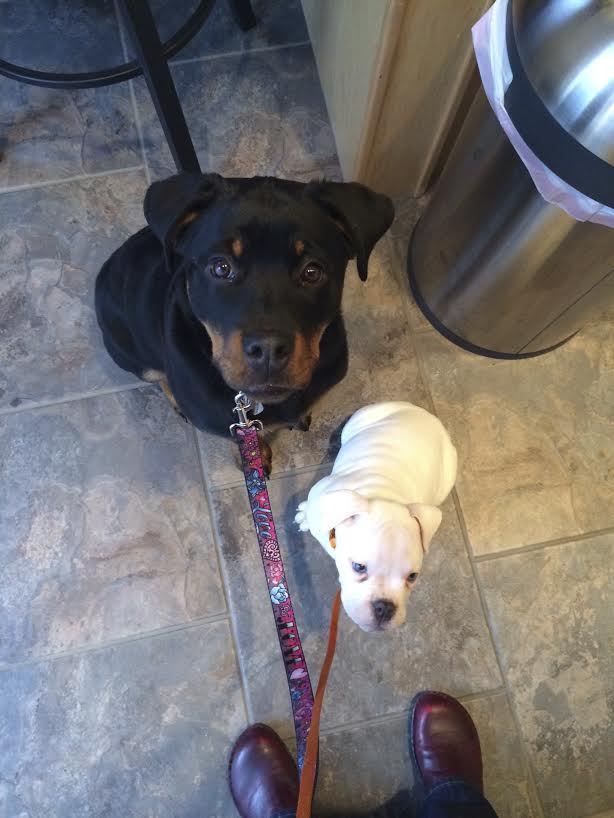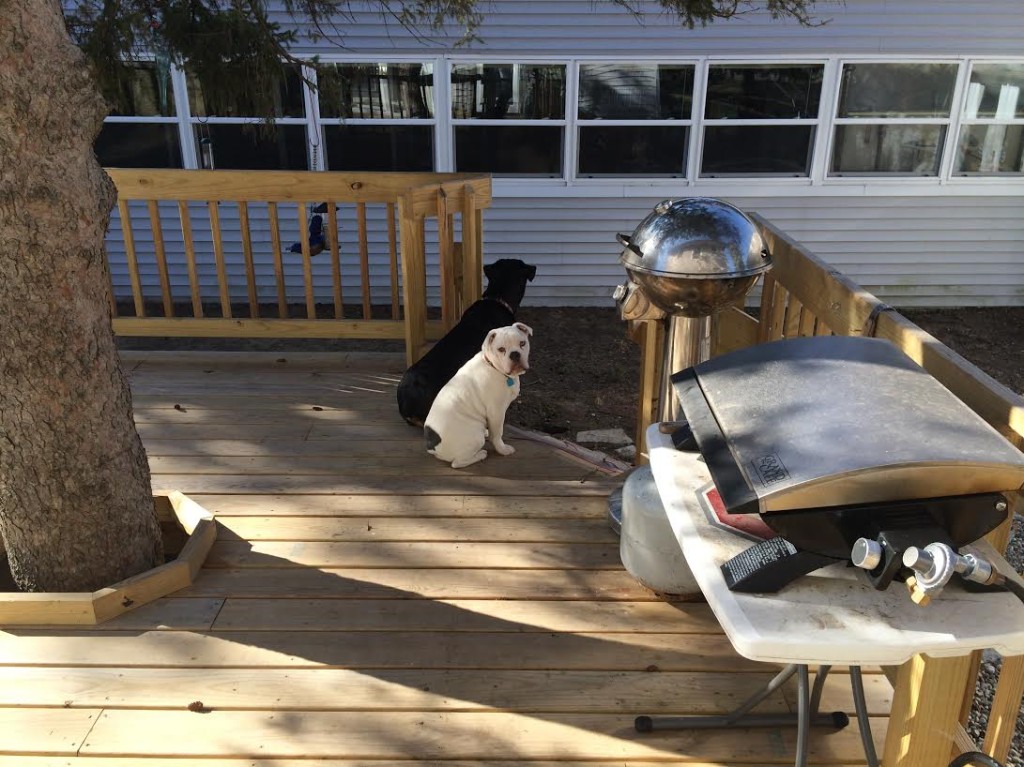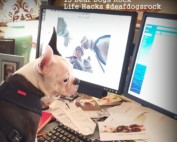I would like to welcome Lara Joseph K-9 trainer from The Animal Behavior Center in Sylvania. Ohio.Lara brings her training tips and information to us from what she has learned with her new deaf bulldog puppy Levi. Lara lives in Ohio where she owns and operates The Animal Behavior Center, an animal behavior and training facility based on teaching people how to train, force-free through empowering the animal and creating strong, reliable, trust-building relationships using positive reinforcement and applications in behavior analysis. She travels, lectures, consults, and presents workshops on behavior, behavior change, positive reinforcement training, and enrichment.
Positive Reinforcement Deaf Dog Training Rocks – By Lara Joseph
/A year ago this month I adopted a deaf bulldog pup that I have named Levi. He is now about 14 months old and has been with me since he was ten weeks old. His eyes are crystal blue, which attracts the attention of many. Only some of the time will I let people know he is deaf. If I didn’t tell people, they would likely not even be able to tell. Why would I not let people know, you may ask? Many people show pity on an animal with the loss of one or more of their senses, or a missing or deformed body part. There is no need to pity Levi. He knows life no other way and he is a fully functioning, if not more functioning than my other dog that can hear just fine.
Since caring for, living with, and training Levi, I don’t see his deafness as a disability. It just means he cannot hear. For what he lacks in hearing, he makes up for in his other senses. He is more aware of his surroundings visually than my other dog, which Levi shares our house with. Everything Quincy, my other dog does, Levi can do to, except hear.
Whenever our dogs can see, hear, or feel us, we are training them whether we realize it or not. It is very important for Levi to know and understand the same behaviors that I would teach Quincy. I usually teach the animals in my care to be independent and understanding the value of manners. I teach this as well with Levi with an exception. I do reinforce Levi’s behaviors of staying close to and following myself, others he knows, and Quincy. This is one additional way in which I can get Levi to come to me when he is not looking at me. If he is taught to stay near and follow those he knows well, I can call Quincy or others near Levi to come to me, knowing Levi will follow.
I want others to enjoy my dogs as much as I do. I want them to live a long, happy, and well-behaved life with me and all of those I share my life with. Many people do not appreciate other people’s dogs jumping on them, playing too rough with them, begging for food, and displaying other undesired behaviors. I want and need Levi to understand all of the desired and well-trained behaviors that I trained Quincy. Teaching a dog desired behaviors, whether deaf or not, also helps keep that dog in its home.
Levi is trained to come with a visual cue when he is not looking at me by following a visual cue as well. He is trained to follow two different cues of following my pointing finger until my finger stops pointing or by running to me when he sees my waving hand signaling him to come to me. Each cue brings highly valued reinforcers because I need this behavior to always remain strong. Since he cannot hear me saying the word “Good”, I use the “thumb’s-up” hand signal. My business requires me to have several different animals. I have parrots and other birds, fish, other dogs, and train many other animals off-site. For safety reasons in addition to the desire to have a well-behaved dog, I have trained Levi station (stay in a requested spot) outside of the bird cages. He is trained and reinforced for standing or sitting at the outside of the cage doors when a cage door is opened. This behavior could come in very handy in most households. This could be trained to dogs you don’t want going into certain rooms of the house or who you don’t want following you while an outside door is being opened.
Because Levi is trained to stay close to or follow other people or Quincy, it makes it easier for me to teach him loose-leash walking. I always make sure I positively reinforce behaviors I want to see maintain or increase.
Without reinforcement, a behavior will begin fading in occurrence. Once a behavior is trained, reinforcing that desired behavior once in a while will help keep that behavior very strong. If training a new behavior or re-training a behavior, continuously reinforcing that behavior every single time it happens will re-train or keep that behavior very strong.
Train your deaf pup to sit when requested, to come to you when cued, to keep all four feet on the floor when greeting others, to go into a crate, to wait patiently to come out of the crate or other door, to walk loosely on a leash, and other desired behaviors.
Every animal moves toward things they like and away from things they don’t like. Your training and the consequences you give your dog for desired behaviors, makes your dog want to give you your requested behaviors and makes for a well behaved dog, deaf or not.
More about Lara: Lara is the owner of The Animal Behavior Center, LLC in Ohio. She presents workshops, travels, lectures, and consults focusing on positive reinforcement interactions and modifying behavior through applications in behavior analysis. She is also the Director of Training for a wildlife rehabilitation center where she focuses on taking stress out of animal environments. Lara is a professional member of The Animal Behavior Management Alliance and The International Association of Avian Trainers and Educators. She is also a member of and writes for The American Federation of Aviculture and The Pet Professional Guild. For more information visit her website at TheAnimalBehaviorCenter.com.









